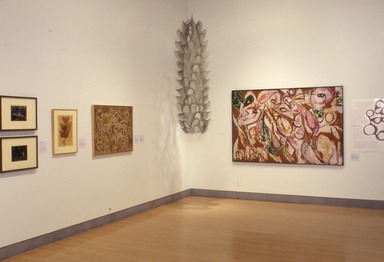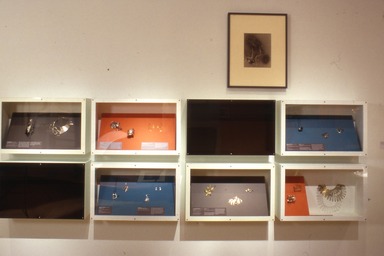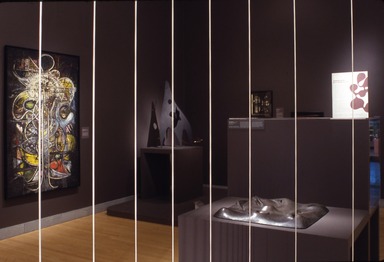

Vital Forms: American Art and Design in the Atomic Age, 1940-1960, October 12, 2001 through January 6, 2002 (Image: PSC_E2001i197.jpg Brooklyn Museum photograph, 2001)
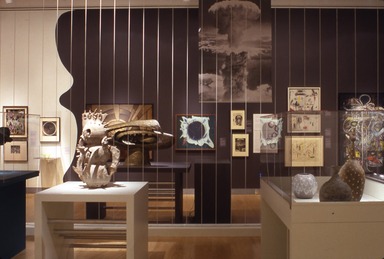
Vital Forms: American Art and Design in the Atomic Age, 1940-1960, October 12, 2001 through January 6, 2002 (Image: PSC_E2001i198.jpg Brooklyn Museum photograph, 2001)
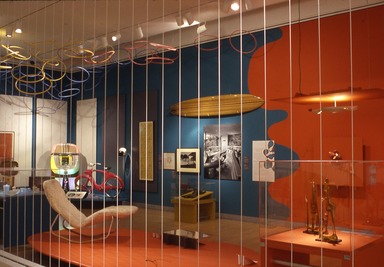
Vital Forms: American Art and Design in the Atomic Age, 1940-1960, October 12, 2001 through January 6, 2002 (Image: PSC_E2001i199.jpg Brooklyn Museum photograph, 2001)

Vital Forms: American Art and Design in the Atomic Age, 1940-1960, October 12, 2001 through January 6, 2002 (Image: PSC_E2001i200.jpg Brooklyn Museum photograph, 2001)

Vital Forms: American Art and Design in the Atomic Age, 1940-1960, October 12, 2001 through January 6, 2002 (Image: PSC_E2001i201.jpg Brooklyn Museum photograph, 2001)

Vital Forms: American Art and Design in the Atomic Age, 1940-1960, October 12, 2001 through January 6, 2002 (Image: PSC_E2001i202.jpg Brooklyn Museum photograph, 2001)
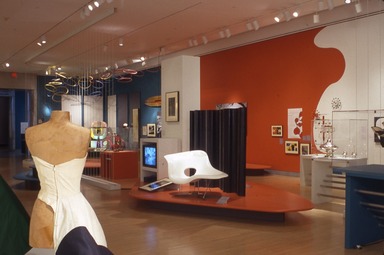
Vital Forms: American Art and Design in the Atomic Age, 1940-1960, October 12, 2001 through January 6, 2002 (Image: PSC_E2001i203.jpg Brooklyn Museum photograph, 2001)

Vital Forms: American Art and Design in the Atomic Age, 1940-1960, October 12, 2001 through January 6, 2002 (Image: PSC_E2001i204.jpg Brooklyn Museum photograph, 2001)

Vital Forms: American Art and Design in the Atomic Age, 1940-1960, October 12, 2001 through January 6, 2002 (Image: PSC_E2001i205.jpg Brooklyn Museum photograph, 2001)

Vital Forms: American Art and Design in the Atomic Age, 1940-1960, October 12, 2001 through January 6, 2002 (Image: PSC_E2001i206.jpg Brooklyn Museum photograph, 2001)
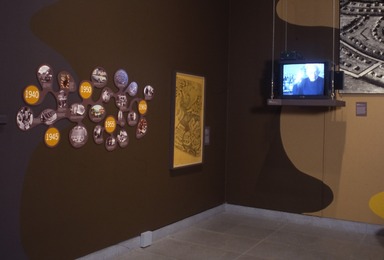
Vital Forms: American Art and Design in the Atomic Age, 1940-1960, October 12, 2001 through January 6, 2002 (Image: PSC_E2001i207.jpg Brooklyn Museum photograph, 2001)

Vital Forms: American Art and Design in the Atomic Age, 1940-1960, October 12, 2001 through January 6, 2002 (Image: PSC_E2001i208.jpg Brooklyn Museum photograph, 2001)

Vital Forms: American Art and Design in the Atomic Age, 1940-1960, October 12, 2001 through January 6, 2002 (Image: PSC_E2001i209.jpg Brooklyn Museum photograph, 2001)

Vital Forms: American Art and Design in the Atomic Age, 1940-1960, October 12, 2001 through January 6, 2002 (Image: PSC_E2001i210.jpg Brooklyn Museum photograph, 2001)

Vital Forms: American Art and Design in the Atomic Age, 1940-1960, October 12, 2001 through January 6, 2002 (Image: PSC_E2001i211.jpg Brooklyn Museum photograph, 2001)
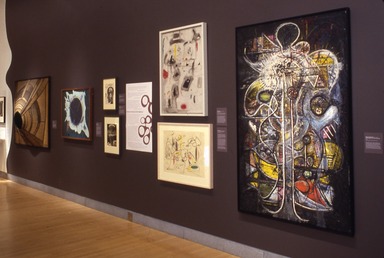
Vital Forms: American Art and Design in the Atomic Age, 1940-1960, October 12, 2001 through January 6, 2002 (Image: PSC_E2001i212.jpg Brooklyn Museum photograph, 2001)

Vital Forms: American Art and Design in the Atomic Age, 1940-1960, October 12, 2001 through January 6, 2002 (Image: PSC_E2001i213.jpg Brooklyn Museum photograph, 2001)

Vital Forms: American Art and Design in the Atomic Age, 1940-1960, October 12, 2001 through January 6, 2002 (Image: PSC_E2001i214.jpg Brooklyn Museum photograph, 2001)
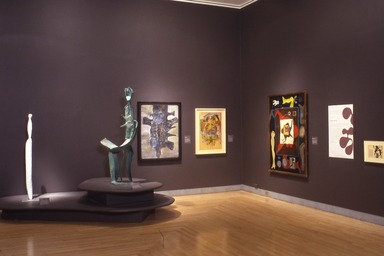
Vital Forms: American Art and Design in the Atomic Age, 1940-1960, October 12, 2001 through January 6, 2002 (Image: PSC_E2001i215.jpg Brooklyn Museum photograph, 2001)

Vital Forms: American Art and Design in the Atomic Age, 1940-1960, October 12, 2001 through January 6, 2002 (Image: PSC_E2001i216.jpg Brooklyn Museum photograph, 2001)
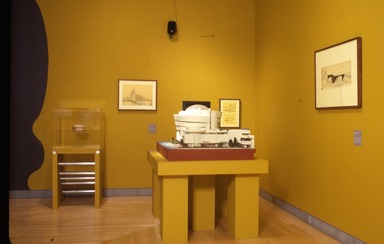
Vital Forms: American Art and Design in the Atomic Age, 1940-1960, October 12, 2001 through January 6, 2002 (Image: PSC_E2001i217.jpg Brooklyn Museum photograph, 2001)
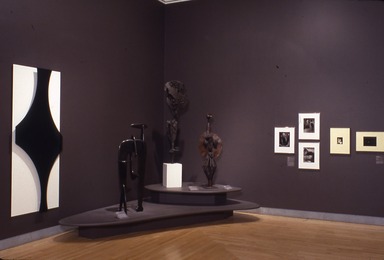
Vital Forms: American Art and Design in the Atomic Age, 1940-1960, October 12, 2001 through January 6, 2002 (Image: PSC_E2001i218.jpg Brooklyn Museum photograph, 2001)

Vital Forms: American Art and Design in the Atomic Age, 1940-1960, October 12, 2001 through January 6, 2002 (Image: PSC_E2001i219.jpg Brooklyn Museum photograph, 2001)
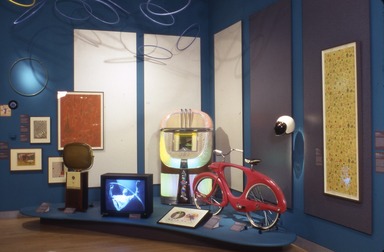
Vital Forms: American Art and Design in the Atomic Age, 1940-1960, October 12, 2001 through January 6, 2002 (Image: PSC_E2001i220.jpg Brooklyn Museum photograph, 2001)

Vital Forms: American Art and Design in the Atomic Age, 1940-1960, October 12, 2001 through January 6, 2002 (Image: PSC_E2001i221.jpg Brooklyn Museum photograph, 2001)
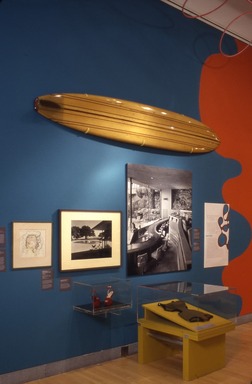
Vital Forms: American Art and Design in the Atomic Age, 1940-1960, October 12, 2001 through January 6, 2002 (Image: PSC_E2001i222.jpg Brooklyn Museum photograph, 2001)

Vital Forms: American Art and Design in the Atomic Age, 1940-1960, October 12, 2001 through January 6, 2002 (Image: PSC_E2001i223.jpg Brooklyn Museum photograph, 2001)
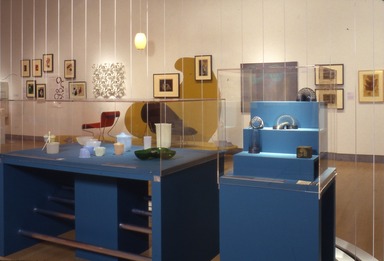
Vital Forms: American Art and Design in the Atomic Age, 1940-1960, October 12, 2001 through January 6, 2002 (Image: PSC_E2001i224.jpg Brooklyn Museum photograph, 2001)

Vital Forms: American Art and Design in the Atomic Age, 1940-1960, October 12, 2001 through January 6, 2002 (Image: PSC_E2001i225.jpg Brooklyn Museum photograph, 2001)
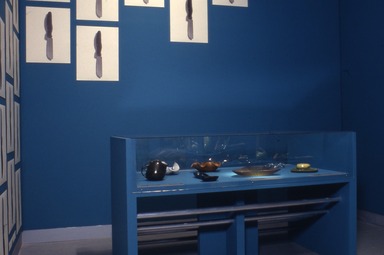
Vital Forms: American Art and Design in the Atomic Age, 1940-1960, October 12, 2001 through January 6, 2002 (Image: PSC_E2001i226.jpg Brooklyn Museum photograph, 2001)
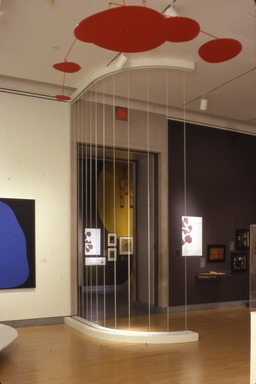
Vital Forms: American Art and Design in the Atomic Age, 1940-1960, October 12, 2001 through January 6, 2002 (Image: PSC_E2001i227.jpg Brooklyn Museum photograph, 2001)
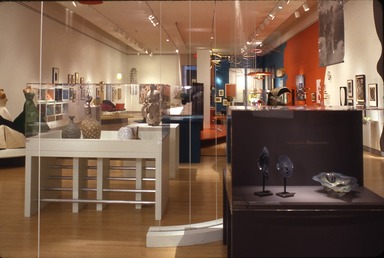
Vital Forms: American Art and Design in the Atomic Age, 1940-1960, October 12, 2001 through January 6, 2002 (Image: PSC_E2001i228.jpg Brooklyn Museum photograph, 2001)

Vital Forms: American Art and Design in the Atomic Age, 1940-1960, October 12, 2001 through January 6, 2002 (Image: PSC_E2001i229.jpg Brooklyn Museum photograph, 2001)
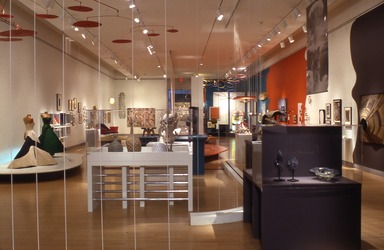
Vital Forms: American Art and Design in the Atomic Age, 1940-1960, October 12, 2001 through January 6, 2002 (Image: PSC_E2001i230.jpg Brooklyn Museum photograph, 2001)
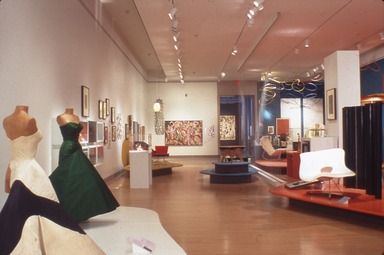
Vital Forms: American Art and Design in the Atomic Age, 1940-1960, October 12, 2001 through January 6, 2002 (Image: PSC_E2001i231.jpg Brooklyn Museum photograph, 2001)

Vital Forms: American Art and Design in the Atomic Age, 1940-1960, October 12, 2001 through January 6, 2002 (Image: PSC_E2001i232.jpg Brooklyn Museum photograph, 2001)

Vital Forms: American Art and Design in the Atomic Age, 1940-1960, October 12, 2001 through January 6, 2002 (Image: PSC_E2001i233.jpg Brooklyn Museum photograph, 2001)
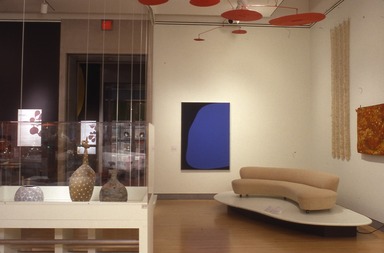
Vital Forms: American Art and Design in the Atomic Age, 1940-1960, October 12, 2001 through January 6, 2002 (Image: PSC_E2001i234.jpg Brooklyn Museum photograph, 2001)

Vital Forms: American Art and Design in the Atomic Age, 1940-1960, October 12, 2001 through January 6, 2002 (Image: PSC_E2001i235.jpg Brooklyn Museum photograph, 2001)
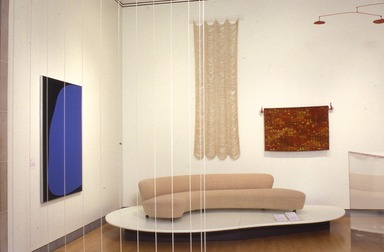
Vital Forms: American Art and Design in the Atomic Age, 1940-1960, October 12, 2001 through January 6, 2002 (Image: PSC_E2001i236.jpg Brooklyn Museum photograph, 2001)

Vital Forms: American Art and Design in the Atomic Age, 1940-1960, October 12, 2001 through January 6, 2002 (Image: PSC_E2001i237.jpg Brooklyn Museum photograph, 2001)
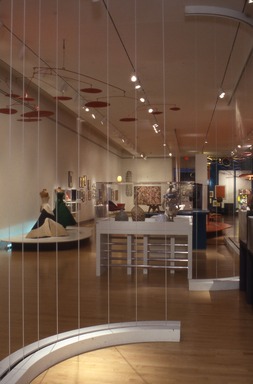
Vital Forms: American Art and Design in the Atomic Age, 1940-1960, October 12, 2001 through January 6, 2002 (Image: PSC_E2001i238.jpg Brooklyn Museum photograph, 2001)
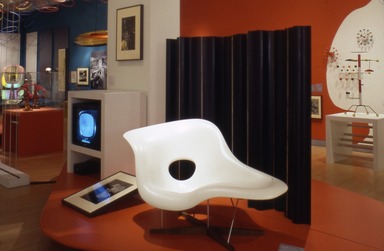
Vital Forms: American Art and Design in the Atomic Age, 1940-1960, October 12, 2001 through January 6, 2002 (Image: PSC_E2001i239.jpg Brooklyn Museum photograph, 2001)
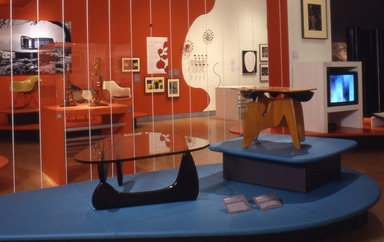
Vital Forms: American Art and Design in the Atomic Age, 1940-1960, October 12, 2001 through January 6, 2002 (Image: PSC_E2001i240.jpg Brooklyn Museum photograph, 2001)

Vital Forms: American Art and Design in the Atomic Age, 1940-1960, October 12, 2001 through January 6, 2002 (Image: PSC_E2001i241.jpg Brooklyn Museum photograph, 2001)

Vital Forms: American Art and Design in the Atomic Age, 1940-1960, October 12, 2001 through January 6, 2002 (Image: PSC_E2001i242.jpg Brooklyn Museum photograph, 2001)
Vital Forms: American Art and Design in the Atomic Age, 1940-1960
-
Vital Forms: American Art and Design in the Atomic Age, 1940–1960
This automobile serves to introduce an exhibition on view on the fourth floor, Vital Forms: American Art and Design in the Atomic Age, 1940–1960. “Vital forms” are shapes inspired by nature; innovative artists and designers used them in the 1940s and 1950s to evoke living entities, ranging from amoebas and plant life to the human figure. The exhibition features paintings, sculpture, photography, architecture, ceramics, fashion, and graphic and industrial design.
Every period has its own visual vocabulary, which it partly borrows from the past and partly invents to meet new needs. The language of vital forms expressed the dualities of its times: the hopes and fears, the dreams and nightmares, of the middle years of the twentieth century were reflected in organic forms that were highly mutable, seemingly as changeable as life itself.
In this era, the country witnessed many cataclysmic events, from World War II—with the Holocaust and the atomic bomb—to postwar McCarthyism and the Cold War, yet also saw a burst of optimism with the prosperity, and the growing consumerism, of the 1950s. The visual language of vital forms expressed the conflicts and complexities inherent in this remarkable period of America’s history.
As suggested by the 1953 Chevrolet Corvette shown here, the increasing speed of transportation, as well as of communications, helped spread the vital forms vocabulary in the postwar years. Indeed, two principal factors in the acceleration of this mobile society were the automobile and the television set, both of which existed before the war but came fully into their own only afterward, with the interstate highway system and the affordable home TV set. Both broke down the boundaries of regionalism, unified diverse populations in the country—and also began the process of creating a more homogeneous American design aesthetic. It is therefore no surprise that the design of television sets, automobiles, and highways, too (as in the cloverleaf interchanges shown on the backdrop), was shaped by the new interest in vital forms, even though their technical requirements neither demanded nor suggested such treatment.
More than two hundred and fifty other examples of this vocabulary of living forms can be found in the exhibition on the fourth floor. -
World War II and the Dawn of the Atomic Age
The history of my generation begins with the problem of what to paint. During the war it became sort of nonsensical to get involved in . . . painting men playing violins or cellos or flowers. . . . The war . . . made it impossible to disregard the problem of subject matter.
—Painter Barnett Newman (1966)
But we could not fight Germany and Japan with ice boxes and automobiles; our tremendous industrial power had to be shifted from peacetime production to war purposes . . . . Automobile manufacturers—and one of them alone can fabricate more metal than all Japan—are making tank engines and plane engines and antiaircraft guns. Machines to make vacuum cleaners have been shifted to making weapons.
— From War Facts: A Handbook for Speakers on War Production (Washington, D.C.: Office of Emergency Management for the Division of Information, War Production Board, 1942)
Although World War II was fought on distant shores, it profoundly affected all aspects of life in the United States, as Americans mobilized for the war effort. After Pearl Harbor, the active machinery of American production shifted from consumer goods to military equipment. And the mood of the country changed, as news of battles won and lost, of casualties, and of crimes against humanity took their toll.
The gravity of the war changed the course of American art and design as well. It made 1930s American Scene painting and Regionalism, which often showed an agrarian daily life, seem naïve and nostalgic, and WPA photographs outdated. At the same time, the free-thinking Surrealist artists who came to this country from Europe to escape Hitler exerted enormous influence. In this era of international crisis, American artists and designers often used organic forms, especially the human figure, as a way of reasserting humane values.
Public awareness of the Atomic Age began with the horrendous explosions in 1945 over Hiroshima and Nagasaki that ended the war. It was not until 1955 that atomic energy became available for peacetime uses in the United States. During this time of uncertainty, artists responded to the atomic phenomenon with powerful abstractions. -
Immigration and the Birth of the New York School
The war caused a massive migration of European artists to America, including artists whose work would significantly affect the use of vital forms by their American peers. Perhaps the greatest influence was Surrealism. This avant-garde movement of both artists and writers was grounded in André Breton’s 1924 Surrealist Manifesto, advocating the creative powers of the unconscious. During the war, when Surrealists such as Gordon Onslow Ford and Breton himself arrived in New York, American artists learned firsthand about the movement through exhibitions and lectures.
The artists in the U.S. who were later labeled Abstract Expressionists took the tenets of Surrealism, such as the eruption of living shapes from the subconscious, and adapted them to a new style that was distinctively American. Often working on oversize canvases , Abstract Expressionists such as William Baziotes, Jackson Pollock, and Richard Pousette-Dart applied their paint rapidly and forcefully to release inner feelings. New York became the center of the art world at this time, although significant work was being made in other American cities such as Chicago and San Francisco.
For many, the cataclysm of the war colored or overshadowed Surrealism as an artistic influence. The war’s impact is clear in a number of the works on view in this gallery—and in the recollections of Onslow Ford:
And when we got to Paris, about four or five days after the war started, we went to the café, and there, to my astonishment, was [André] Breton in uniform. I couldn’t believe it. I said, “What’s happened, André? I can’t understand it, what’s happened?” And for me, that was the end of Surrealism, when Breton put on a uniform—that was the end. -
Direct Influence of the War
Many European émigré artists and designers brought an immediate awareness of the war’s carnage to an America distanced from the realities of the conflict overseas. Artists both here and abroad attempted to capture the era’s sense of tragedy. Biomorphic abstractions such as Alexander Calder’s The Root and Adolph Gottlieb’s Prisoners powerfully brought home the effects of the worldwide debacle. Certain materials crucial to the war effort—steel, aluminum, wood—were in short supply.
To meet the urgent needs of the times, architects and industrial designers turned to new materials: molded plywood splints, new camouflage fabrics, and rugged equipment such as the jeep were among the innovations that came of necessity. Similarly, the war-time housing shortage generated experiments in prefabrication. And new roles for women in the work force resulted in new kinds of garments; Rosie became the practiced riveter of legend. -
The Atom
It seems to me that the modern painter cannot express this age, the airplane, the atom bomb, the radio, in the old forms of the Renaissance or of any other past culture. Each age finds its own technique.
—Painter Jackson Pollock (1951)
Whether the American artist expresses the destructive power of science or the hope inherent in its wiser uses, whether his personal vision is gloomy or optimistic, it is here that he lives closest to the new “subject matter.”
—Painter Boris Margo (1947)
Enough of the past—let’s talk about the present and future. Much that has been written about atomic energy has inspired fear and confusion. . . . This is not a healthy state of affairs. Atomic energy must be explained. The average American likes new scientific devices. He must learn that nuclear energy, like fire and electricity, can be a good and useful servant.
—General Leslie R. Groves (1949)
When the atomic bomb was dropped on Japan, causing terrible human suffering, the image of the mushroom cloud entered the American collective conscience. Creative artists in many fields witnessed the dawn of the nuclear era with anxiety. Indeed, W. H. Auden won the 1948 Pulitzer Prize for poetry with his collection Age of Anxiety, and the next year Leonard Bernstein wrote a symphony with the same title.
With the onset of the Atomic Age, disturbing, mutant forms—the result of exposure to radiation—began to appear in films and novels. Yet at the same time, the playful, positive form of the atom’s structure, with electrons circling the nucleus , also became an integral part of the period’s imagery, in art as well as in domestic products. By the mid-1950s, some Americans were optimistic about the atom’s role as a new source of energy, a replacement for coal and oil in generating electricity.
The Cold War between the United States and the Soviet Union and the resulting arms race, however, fed the persistent fear of nuclear destruction. The paradox remains with us today, as we continue to struggle with how to reconcile the positive and negative aspects of atomic energy.
-
The Land of Plenty
In the 40s and 50s, we were young, the war was over, we had peace and prosperity; the negatives—pollution, energy shortages, decay of cities—were that little cloud no larger than a man’s hand.
—Designer George Nelson (1974)
With the end of the war, as manufacturers returned to making peacetime products, the United States became a great consumer culture. Money was plentiful, goods flowed, and Americans felt they deserved the rewards of victory.
The rewards were many. Houses were cheap: a new, three-bedroom residence in the suburbs of New York cost less than $10,000, and the GI Bill made mortgages affordable to many who had never dreamed of owning a home before the war. A visionary new system of interstate highways linked every region. Television, too, brought Americans together as never before to share in the same dreams: manufacturers advertised all manner of consumer goods on TV, from cars to washing machines, and now-classic sitcoms promoted an idealized American lifestyle to which to aspire.
The consumer products designed in this era of optimism often took organic shapes, establishing a distinctively postwar look that contrasted with the machine-like appearance of prewar products.
Not everyone was an equal partner in this happy new America; the social issues that would erupt in the 1960s were already boiling just under the calm surface. And nuclear disaster remained just one red button away. But for the most part, Americans were optimistic in their land of plenty. -
Innovative Materials
In the 1940s, modern tables, containers, and all sorts of things suddenly began to melt, to become soft. What had influenced so many designers simultaneously? I thought at the time it might have been Salvador Dali’s paintings, one in particular, with the melting watch.
—Designer Eva Zeisel (1991)
The demands of the war led to the development of innovative materials—fiberglass, plastics, molded plywood—some of them entirely new and others used in new ways. Many of these materials shared a common characteristic: they were malleable and could be easily shaped into free forms. Often used to serve the new science of ergonomics—the adaptation of an object to the human body—these pliable synthetic materials became the primary media of much postwar product design.
The malleability of synthetics made possible the organic forms typical of plastic products such as Tupperware. Furniture designers produced organic forms by using molded plywood, fiberglass, and plastic, creating pieces that were ergonomically as well as aesthetically successful.
Many museums organized exhibitions of the art of everyday objects, emphasizing the importance of satisfying consumer needs while maintaining high design standards. To promote such standards, the Brooklyn Museum established a laboratory open to designers and manufacturers for research into design issues. -
Sheltering Humanity
Modern-architecture is organic-architecture deprived of its soul.
— Architect Frank Lloyd Wright on the International Style (1952)
The ultimate vital form was the human body. For in the face of staggering political, cultural, and economic change, this was a unifying constant—the essential point of reference for artists, designers, viewers, and consumers. Although the body was frequently disfigured in the art of the period, its recurrent appearance, especially in the 1950s, signified the endurance of humane values through a difficult period of history. While these representations can be viewed as formal experiments, they also embody the deeper concerns of the time.
Certain architects also employed an organic vocabulary, enveloping the human body in fanciful and uplifting forms. Their expressive works are more symptomatic of the era’s economic growth than of its chilling political climate. Several of the mid-century’s best-known buildings are facilities for travel or recreation, reflecting the physical, and economic, mobility of the postwar years. They likewise try to reconcile new technologies with the need for comfort in human habitation, moving away from the machine-like modernism of the 1920s and 1930s.
A number of fashion designers similarly took up an aesthetic of freedom in garments that conformed to and celebrated the human body. Such modern fashion complemented the more active lifestyle, at work and at play, that women took up during and after the war.
•
Lately, I’ve become accustomed to the way
The ground opens up and envelops me
Each time I go out to walk the dog . . .
Things have come to that.
—Poet Amiri Baraka (1961)
A time came when none of us could use the figure without mutilating it.
—Painter Mark Rothko (1958)
The artists exhibited here chose to incorporate the figure into their work, though sometimes in distorted form. Figural representation was a way of expressing humanistic concerns and, as Freudian psychoanalysis became more popular in the 1950s, of examining the inner workings of the individual mind.
Although many Abstract Expressionists erased the human figure through complete abstraction, some, notably Willem de Kooning, continually focused on the abstracted figure, despite the New York art world’s anti-figuration bias. And other New York artists were not as resolutely opposed to representation as is often thought—as witness Jackson Pollock’s figural black and white paintings of the early 1950s, David Smith’s sculptures based on the body, Louise Nevelson’s Personages, and Isamu Noguchi’s quasi-figural sculptures. A number of Chicago artists also maintained an interest in the human form.
-
Building Organic
I don’t call it International Style, I call it International Death. A feeling of impersonality is what it arouses because impersonality is its aim.
—Painter Mark Tobey (1947)
By the early fifties, despite the triumph of International Style architecture and its Bauhaus-influenced glass-and-steel-box office buildings, certain maverick architects sought to escape the confines of conformist modernism, building humane structures that rebuked geometric rationalism. Frank Lloyd Wright, the elder statesman of organic design who a half-century earlier had helped architecture “break out of the box,” defied the grid of New York City’s street plan and the rigid modernist style with his dynamic Guggenheim Museum, a colossal coil of poured concrete. Similarly, Eero Saarinen sought the freedom of avian forms in his flowing TWA Terminal, which resembles a bird in flight.
The commercial architect Morris Lapidus, too, used organic forms in freewheeling schemes such as the Fontainebleau Hotel in Miami Beach to create an “architecture of joy.” And in the late fifties, the Bauhaus-trained Bertrand Goldberg proved, with the curving forms and flower-like floor plans of his Marina City Towers in Chicago, that even skyscrapers need not be boxes. Through innovations such as these, the building boom of the postwar years found a distinctive style. -
Vital Garments: Functional and Liberating
Fashion design is by definition about the human body. In France, however, the most prominent postwar designers, such as Christian Dior, were obscuring the human form in traditional and structurally reinforced garments. A number of American designers bucked this trend and introduced clothing that took its shape from the body’s natural contours (as did the molded plywood and fiberglass chairs that simultaneously flooded the market). These form-fitting garments made use of such innovations as lightweight contemporary fabrics as well as spaghetti-string belts that allowed the wearer to customize the fit.
Claire McCardell, who had begun working in the 1930s, was preeminent among these designers. She advocated clean, simple, functional clothing that combined mass-production with quality workmanship. Her work coincided with the rise of fashion magazines, such as Mademoiselle and Glamour, that catered to a younger number of physically active American women. Her garments promoted freer movement while defining a new, form-revealing aesthetic. -
Popular Culture
Blue Skies, smiling at me, nothing but blue skies do I see. . . . Never saw the sun shining so bright, never saw things going so right.
— Sung by Bing Crosby in the film Blue Skies (1946)
Beaver’s street was where we wanted to live, Beaver’s house where we wanted to eat and sleep, Beaver’s father’s firm where we’d have liked Daddy to work. These shows for us were about property, the property that white people could own and that we couldn’t. About a level of comfort and ease at which we could only wonder.
— Dr. Henry Louis Gates Jr. (1994) on the 1950s television show Leave It to Beaver
America’s popular culture was invigorated when, after two decades of pent-up demand during the Depression and World War II, the public’s craving for consumer goods could finally be satisfied. Products were now often seen on tele- vision shows and commercials. Newly prosperous young homemakers fastened onto biomorphic design as an up-to-date modern look, a departure from the Art Deco and streamlined Moderne styles of the prewar period. Sensuously modeled, mass-produced ceramics and glass brought high-style, low-cost organic design to the middle-class household. Many novel design ideas related to the outdoors originated in California and spread nationally, such as the free-form swimming pool, the lozenge-shaped fiberglass surfboard, and the body-conscious swimsuit. Even children’s playthings were influenced by organic design, from the snakelike Slinky toy and the Spacelander bicycle to the fifties fad the hula hoop. -
Gallery of Organic Forms
Whatever their source or the reason for their flowering, forms based on nature became the visual language of the 1940s and 1950s among many talented and influential designers and artists. In the battle of styles, the hard-edged machine aesthetic of the prewar years had lost out. Sometimes the undulating, curving, biomorphic forms of the postwar era grew out of a design process that sought to adapt an object to use by the human body, as well as exploit the flexibility of new materials. In other cases, artists made use of the vocabulary of organic forms in a more general way, to celebrate the modernity, the politics, or the popular culture of the age.
This section of the exhibition examines how the visual language of vital forms took on a life of its own and became a standard vocabulary—a style. The transformation of a theory into a trend, moving across boundaries of class, taste, and artistic medium, had occurred with other design movements, from Arts and Crafts to the International Style. Likewise, in mid-century America, certain object s eventually emerged whose shape, though organic, had no clear relationship to the broader context that had engendered the idea of vital forms. The elegant objects in this section are examples of “high culture,” many representing single or limited-production items sold in galleries to an affluent elite. -
The high-style fashion of the postwar era has a complicated relationship to the human body. In some cases, such as the Claire McCardell dresses seen in an earlier section, the enlivening form is supplied by the body itself. But in other cases, such as the gowns and jewelry seen here, the body has only suggested the idea of supple, curving forms— which have been transformed into an independent sculptural expression that encapsulates and caresses the body within.
The luxury fashions in this gallery were available only to a small group of clients even more affluent than those who typically owned the furniture exhibited nearby. While the furniture was intended to be mass-produced (though for a very small, well-to-do, and sophisticated market), the Charles James gowns, designer hats, and even many pieces of jewelry were often custom made and one of a kind. The clients enjoyed direct access to the designer, without retail middlemen. These singular creations, often made for specific events, provide a counterpoint to the organic forms seen in popular culture for mass consumption. -
Natural Forces
If you study the principles of nature, then the answers are all there. I like what I do because I take an impersonal material like wire which is very hard and then make it into a gentle thing that is natural. So you can take an abstract piece of wire and turn it into a plant. I like that transition from hard to soft.
—Sculptor Ruth Asawa (2000)
These sprays, dusts, and aerosols are now applied almost universally to farms, gardens, forests, and homes—nonselective chemicals that have the power to kill every insect, the “good” and the “bad,” to still the song of birds and the leaping of fish in the streams, to coat the leaves with a deadly film, and to linger on in soil. . . . Can anyone believe it is possible to lay down such a barrage of poisons on the surface of the earth without making it unfit for all life? They should not be called “insecticides,” but “biocides.”
—Rachel Carson, Silent Spring (1962)
Although artists and designers responded to myriad influences in the 1940s and 1950s, one overriding inspiration was nature. The small group of paintings, sculpture, and photographs shown here explores how certain artists focused on plant life—either through the camera lens, or by using an actual leaf in a composition, or by creating an atmospheric setting that simulated the experience of being in nature.
By the late 1950s, there was a renewed interest in our natural surroundings. At this time, Rachel Carson had begun research for her groundbreaking book Silent Spring, which drew attention to the dangers of the pesticide DDT and helped spawn the environmental movement in this country. Historically, American artists have celebrated the vastness of the landscape. During this period, however, and despite the prestige of abstract painting, some artists drew even closer to nature, capturing its vulnerability in intimate detail.
-
April 7, 2001
From the automobile and Tupperware to paintings by Willem de Kooning and Mark Rothko, Vital Forms: American Art in the Atomic Age, 1940–1960, an exhibition of some 200 objects, will explore how the use of organic forms crossed the boundaries between fine art and popular culture and was used by leading painters and sculptors of the day as well as by designers of industrial products. A decade in the planning, the exhibition was organized by the Brooklyn Museum of Art, where it will be on view October 12, 2001 through January 6, 2002.
This presentation is the third in a Brooklyn Museum of Art series that has included The American Renaissance, 1876–1917 (1979) and The Machine Age in America, 1918–1941 (1986). Vital Forms has been organized by Brooke Kamin Rapaport, Associate Curator of Contemporary Art, and Kevin L. Stayton, Chair and Curator of Decorative Arts, at the Brooklyn Museum of Art. Consulting curators are Martin Filler, and Mildred Friedman. Dr. Paul Boyer served as the project’s cultural historian. A full color catalogue published by the BMA in association with Abrams will accompany the exhibition.
This is the first exhibition to include all of the visual arts that made use of organic forms in the 1940s and 1950s and to examine their relationship to the period in which they were created. Among the historical events that influenced the art and design of these two decades were World War II, the Holocaust, the immigration from Europe of an extraordinary number of artists and designers, the dropping of the atomic bomb, followed by the Korean war, McCarthyism, and the prosperity and conformity of the 1950s. Much of this uniformity was the result of the creation of the interstate highway system, the spread of suburbia, the proliferation of the automobile, and the growing popularity of television, all of which helped break down regional barriers and begin the process of homogenizing American design.
The war years had produced not only atomic energy, with its positive and negative potentials, but also new technologies such as plastics that were ideally suited for the expression of organic forms. Vital Forms will examine how the visual arts reflected the ambivalence between anxiety and optimism during these decades; how the use of organic form evolved from the purely functional into a style; and how the new technologies played a role in art and design.
The creations of industrial designers provided some of the most memorable applications inspired by organic form, among them a Hobie surfboard (1958), Raymond Loewy’s ubiquitous boomerang design for Formica (before 1954), Tupperware, and Philco television’s Predicta model (1959).
In addition to de Kooning’s large-scale backdrop for Labyrinth (1946), created as a backdrop for a Marie Marchowsky modern dance performance and Rothko’s Entombment#1/The Entombment, the exhibition includes paintings by Jackson Pollock, Barnett Newman, Ellsworth Kelly, Adolph Gottlieb, Lee Krasner, William Baziotes, Leon Golub, and Gordon Onslow Ford. Photography in the exhibition ranges from a U.S. Army Air Forces gelatin silver print of Nagasaki Under Atomic Bomb Attack (1945) to Berenice Abbott’s photographs Soap Bubbles (1946) and Penicillin Mold (1946).
Among the objects representing the application of biomorphic design to the architecture of the era will be photographs of Miami Beach’s Fontainebleau Hotel, designed by Morris Lapidus (1954), Levittown in Nassau County, New York (1947), and Trans World Airlines Terminal (1956–62); and a cement, wire mesh, and Plexiglas model of Frederick J. Kiesler’s Endless House (1959).
A number of important ceramics will also be on view, among them pieces by Russel Wright, Eva Zeisel, and Toshiko Takaezu. The impact of organic design on clothing will be represented by items ranging from examples of Rudi Gernreich’s now-famous bathing suits (1954-55); a spectacular Charles James Four-Leaf Clover ball gown (1953); an assortment of Sally Victor hats; and a U.S. Navy camouflage poncho. Among the variety of textiles included are examples by Jack Lenor Larsen and Ruth Adler Schnee. A wide range of furniture will also be included, among them several pieces by Charles and Ray Eames, including a folding screen and molded plywood chair based on wartime technology developed to create wood stretchers and leg splints, and examples of Isamu Noguchi’s sculptural furniture.
The impact of organic form on graphic design will be seen through magazine and science-fiction paperback book covers, a U.S. Army package of K Rations, brochures, and advertising posters. Also included in Vital Forms is a wide assortment of jewelry, ranging from a necklace and bracelets designed by Alexander Calder to several pendants and a brooch created by Margaret De Patta. Among the sculptures on view are Calder’s mobile Red Lily Pads (1956), Louise Bourgeois’s Sleeping Figure II (1959), and Isamu Noguchi’s Figure (1945).
The works in Vital Forms come from a variety of public and private collections, primarily in the United States. Approximately one quarter of the material has been drawn from the permanent collections of the Brooklyn Museum of Art.
The exhibition was made possible, in part, by generous grants from the National Endowment for the Humanities and the National Endowment for the Arts. Additional support was provided by the Mary Jean and Frank P. Smeal Foundation, the Samuel I. Newhouse Foundation, and the Gramercy Park Foundation. Support for the catalogue was provided through the generosity of Furthermore, the Publication Program of The J. M. Kaplan Fund.
In addition to the Brooklyn Museum of Art presentation, Vital Forms will travel to the Walker Art Center, Milwaukee[sic] (Spring 2002); the Frist Center for the Visual Arts, Nashville ([S]ummer 2002); the Los Angeles County Museum of Art (Fall 2002/Winter 2003); and to the Phoenix Art Museum (Winter/Spring 2003).
View Original -
June 1, 2001
Continuing Exhibitions
Arts of Africa
Long-Term Installation
Leon Golub: Paintings, 1950–2000
Through August 19, 2001
Digital: Printmaking Now
June 22-September 2, 2001
Upcoming Exhibitions
My Reality: Contemporary Art and the Culture of Japanese Animation
July 28-October 7, 2001
American Identities: A Reinterpretation of American Art at the BMA
Opens September 5, 2001 (Long-Term Installation)
Wit and Wine: A New Look at Ancient Iranian Ceramics from the Arthur M. Sackler Foundation
September 7-December 30, 2001
Vital Forms: American Art and Design in the Atomic Age, 1940–1960
October 12, 2001-January 6, 2002
Eternal Egypt: Masterworks of Ancient Art from The British Museum
November 23, 2001-February 24, 2002
Star Wars: The Magic of Myth
April 5-July, 7 2002
Exposed: The Victorian Nude
September 2, 2002-January 5, 2003
The Last Expression: Art from Auschwitz
February 28-May 11, 2003
Great Expectations: John Singer Sargent Painting Children
September 19-November 30, 2003
Continuing Exhibitions
Arts of Africa
Long-Term Installation
(African Galleries, 1st floor)
More than twenty important objects, previously not on view, will be integrated into a major reinstallation of some 225 works from the Museum's exceptional holdings of African art. Although a wide selection from the hundreds of African cultures will be represented, the reinstallation is exceptionally strong in works from Central Africa, particularly those from the Kongo, Luba, and Kuba peoples of the Democratic Republic of the Congo. The majority of the items on display were created for religious or political ceremonial life, but the presentation will also include furniture, textiles, architectural fragments, household items, and objects of personal adornment.
Organization: The reinstallation has been organized by William C. Siegmann, Chair of the Department of the Arts of Africa and the Pacific Islands at the Brooklyn Museum of Art.
Leon Golub: Paintings, 1950-2000
Through August 19, 2001
(European Painting and Sculpture Galleries, 5th floor)
This exhibition examines the career of Leon Golub (b. 1922), dean of American political art, whose intense, gritty paintings examine the complexities of power. The artist's raw and expressive canvases span the second half of the twentieth century and explore issues of race, violence, war, and the human condition. The exhibition of some fifty-five works, many of which are mural-sized, includes such monumental paintings as Gigantomachy Il (1966), Vietnam II (1973), and the BMA's own Riot IV (1983). A selection of Golub's lesser-known political portraits and his recent paintings that consider mortality will also be included.
Organization: Leon Golub: Paintings, 1950-2000 was curated by Jon Bird, an independent, London-based curator, and organized by the Irish Museum of Modern Art in Dublin. Brooke Kamin Rapaport, Associate Curator in the Department of Contemporary Art, organized the presentation at the BMA.
Support: The BMA presentation is supported, in part, by the BMA's Barbara and Richard Debs Exhibition Fund. Additional support is provided by The Broad Art Foundation and Dr. and Mrs. Philip J. Kozinn. Educational activities are made possible by the Third Millennium Foundation.
Publication: Leon Golub: Echoes of the Real, with an essay by Jon Bird, includes more than 130 color plates and is published by Reaktion Books, Ltd., London.
Digital: Printmaking Now
June 22-September 2, 2001
(Morris A. and Meyer Schapiro Wing, 4th floor)
This installment of the Print National, a survey of important developments in the field of printmaking, will focus on the increasing use of computers in the printmaking process. The exhibition, one of the first to address this issue, will include traditionally printed works that have been manipulated digitally and works created entirely by computer.
Organization: This exhibition was organized by Marilyn Kushner, Curator of Prints and Drawings at the Brooklyn Museum of Art. Support: Digital: Printmaking Now is organized by the Brooklyn Museum of Art. The exhibition is made possible, in part, by the Lily Auchincloss Foundation, Inc., and the BMA's Prints and Photographs Council. Additional support is provided by Marc A. Schwartz, Seymour and Laura Schweber, and Philip and Alma Kalb, and The Fund—created by a gift from the Elizabeth Firestone Graham Foundation. Educational activities are supported by the Third Millennium Foundation. Media sponsors are Artbyte Magazine and Art on Paper.
Publication: A fully-illustrated color catalogue will be available.
Upcoming Exhibitions
My Reality: Contemporary Art and the Culture of Japanese Animation
July 28-October 7, 2001
Synergies between Japanese and American popular culture are explored in this showcase of photography, painting, sculpture, and video that investigates the influence of Japanese animation (anime) and techno-culture on art. Anime is incredibly versatile in its ability to comment on social and sexual mores, gender roles, and traditional values in the face of an increasingly alien future. The exhibition features work by Takashi Murakami, Mariko Mori, Paul McCarthy, and Charlie White, among others.
Organization: My Reality: Contemporary Art and the Culture of Japanese Animation was originally curated by Jeff Fleming, Senior Curator, and Susan Lubowsky Talbott, Director of the Des Moines Art Center. The exhibition is coordinated at the Brooklyn Museum of Art by Charlotta Kotik, Department Chair of Contemporary Art.
Support: Educational activities for the BMA's presentation are supported by the Third Millennium Foundation. Additional support provided by The Fund—created by a gift from the Elizabeth Firestone Graham Foundation.
Publication: An illustrated catalogue co-published by the Des Moines Art Center and Independent Curators International accompanies My Reality.
American Identities: A Reinterpretation of American Art at the BMA
September 5, 2001-Long Term
(Luce Center for American Art, 5th floor)
This reinstallation of approximately 350 works from the permanent collections will present an innovative thematic survey of American paintings, sculpture, and decorative arts from the early eighteenth century to the present. An orientation gallery will introduce the visitor to the scope of the collections, showcasing a number of icons in a Brooklyn context. The galleries will be organized in a general chronological fashion with richly interpreted installations devoted to such themes as Dutch New Yorkers, Shaping American Landscapes, The Civil War Era, Women's Worlds, Urban Experiences, and The Drive toward Abstraction.
Organization: This project is a collaboration among curators of American Paintings and Sculpture: Teresa A. Carbone, Project Director; Linda S. Ferber and Barbara Dayer Gallati; Decorative Arts: Kevin L. Stayton, Chair of Department of Decorative Arts, Barry R. Harwood; Contemporary Art: Charlotta Kotik; Arts of Americas: Susan Kennedy Zeller
Support: American Identities: A Reinterpretation of American Art at the BMA is supported by a generous grant from the Independence Community Foundation for the Museum's project American Identities: Building Audiences for the Future, and by the National Endowment for the Arts.
Wit and Wine: A New Look at Ancient Iranian Ceramics from the Arthur M. Sackler Foundation
September 7-December 30, 2001
(Robert E. Blum Gallery, 1st floor)
This exhibition comprises forty-five pottery vessels—most for holding or pouring wine—from ancient Iran, ranging in date from the fifth millennium B.C. to the third century A.D. Demonstrating the extraordinary range of Iranian pottery, the exhibition includes such whimsical examples as a juglike vessel in the shape of human feet, and sculptural works in the shape of camels and bulls. Some containers clearly imitate early metal prototypes, with their unusually thin walls and long spouts, while others are painted with sophisticated ornamental designs depicting the animals of the Iranian highland. The Brooklyn Museum of Art is the last scheduled venue for this traveling exhibition.
Organization: The exhibition has been organized by the Arthur M. Sackler Foundation and curated by Dr. Trudy S. Kawami. James F. Romano, Curator of Egyptian, Classical, and Ancient Middle Eastern Art at the BMA, will organize the presentation at the Brooklyn Museum of Art.
Vital Forms: American Art and Design in the Atomic Age, 1940-1960
October 5, 2001-January 6, 2002
(Grand Lobby, 1st floor; Morris A. and Meyer Schapiro Wing, 4th floor)
This interdisciplinary exhibition will present 250 of the most innovative works of the 1940s and 1950s that embraced a vocabulary of organic, or vital, forms. Through architecture, decorative and industrial arts, graphic design, painting, photography, and sculpture, Vital Forms will examine the use of nature-based imagery during the postwar era. The exhibition will show how this aesthetic development represented an affirmation of life in the face of the Cold War and at the dawn of the nuclear age. Exploring the organic visual language adopted by some of the era's most progressive creators, the exhibition will include works of art and design such as paintings by Willem de Kooning and Mark Rothko, the "Predicta" television set, images of Eero Saarinen's TWA Terminal at JFK International Airport, Tupperware, the "Slinky," and the Ford Thunderbird. Additionally, the exhibition will trace how that visual vocabulary was applied to objects of popular culture, such as Formica countertop laminate and paperback book covers. The exhibition is the third in a series organized by the BMA that began with The American Renaissance, 1876-1917 (1979) and continued with The Machine Age in America, 1918-1941 (1986).
Organization: This exhibition will be organized by Brooke Kamin Rapaport, Associate Curator of Contemporary Art, and Kevin Stayton, Department Head and Curator of Decorative Arts at the Brooklyn Museum of Art. Martin Filler and Mildred Friedman are consulting co-curators, and Dr. Paul Boyer is the project's cultural historian.
Publication: A full-color catalogue published by the Brooklyn Museum of Art and Harry N. Abrams, Inc., will accompany the exhibition.
Tour:
Brooklyn Museum of Art:
October 12, 2001-January 6, 2002
Walker Art Center:
February 16-May 12, 2002
Frist Center for the Visual Arts:
June 21-September 15, 2002
Los Angeles County Museum of Art:
November 17, 2002-February 23, 2003
Phoenix Art Museum:
April 4-June 29, 2003
Support: Vital Forms: American Art and Design in the Atomic Age, 1940-1960 was organized by the Brooklyn Museum of Art. The exhibition was made possible, in part, by generous grants from the National Endowment for the Humanities and the National Endowment for the Arts. Additional support was provided by the Mary Jean and Frank P. Smeal Foundation, The Samuel I. Newhouse Foundation, and the Gramercy Park Foundation. Support for the catalogue was provided through the generosity of Furthermore, the Publication Program of the J.M. Kaplan Fund, as well as a BMA publications endowment created by the Iris and B. Gerald Cantor Foundation and the Andrew W. Mellon Foundation.
Eternal Egypt: Masterworks of Ancient Art from The British Museum
November 23, 2001-February 24, 2002
(Beatrice and Samuel A. Seaver Gallery, 5th floor)
This exhibition will provide a unique opportunity to view more than 140 ancient Egyptian masterpieces from The British Museum in London, many of which have never before traveled to the United States. Many large-scale works will be presented, including the capital of a temple column with a monumental carving of the goddess Hathor, as well as a world-famous portrait statue of the great pharaoh Sesostris III, royal jewelry, and paintings on papyrus illustrating scenes from The Book of the Dead. The exhibition will span the entire pharaonic period, from Dynasty I (about 3100 B.C.) to the period of Roman rule (4th century A.D.).
Organization: This exhibition was organized by the American Federation of Arts and the British Museum, with guest curator Edna R. Russmann, Curator of Egyptian, Classical, and Ancient Middle Eastern Art at the Brooklyn Museum of Art, and W. V. Davies, the British Museum's Keeper of Egyptian Antiquities.
Support: This exhibition and its national tour are made possible by Ford Motor Company. The official hotel of the Brooklyn leg of exhibition is the New York Marriott Brooklyn. Promotional support for the BMA's presentation is provided by Bloomingdale's. Additional support has been provided by the Benefactors Circle of the AFA.
Publication: A fully illustrated catalogue accompanies this exhibition.
Star Wars: The Magic of Myth
April 5-July 7, 2002
(Morris A. and Meyer Schapiro Wing, 4th & 5th floors)
The exhibition showcases original artwork, props, models, costumes, and characters used to create the original Star Wars trilogy—Star Wars: A New Hope, The Empire Strikes Back, and Return of the Jedi—as well as Episode I: The Phantom Menace. Included will be over 30 mannequins, 35 models, and 50 pieces of framed artworks. Among them will be R2-D2, C-3P0, Darth Vader, Yoda, Boba Fett, and Yoda as well as Princess Leia's Slave Girl Costume, Han Solo frozen in carbonite, the Millennium Falcon, and one of Queen Amidala's royal gowns. Interpretive panels throughout the exhibition trace the mythological and literary sources that transform Star Wars into a timeless epic. Drawing upon the work of Joseph Campbell in his book The Hero with a Thousand Faces, the exhibition shows how the themes of the young hero, the faithful companions, the endangered maiden, the wise guide, and others resonate through the Star Wars saga and give it an enduring universality. The exhibition will include a 26-minute documentary film, which will play continuously, on the making of the Star Wars saga.
Organization: Star Wars: The Magic of Myth was developed by the Smithsonian's National Air and Space Museum. The exhibition was organized for travel by the Smithsonian Institution Traveling Exhibition Service (SITES). All artifacts in this exhibition are on loan from the archives of Lucasfilm Ltd. The Brooklyn Museum of Art will be the final stop of a national tour. Catalogue: An illustrated catalogue accompanies the exhibition, entitled Star Wars: The Magic of Myth, by Mary Henderson, exhibition curator from the National Air and Space Museum of the Smithsonian Institution.
Exposed: The Victorian Nude
September 2, 2002-January 5, 2003
(Schapiro Galleries, 4th floor)
The nude figure was one of the most controversial subjects in Victorian England. It fired the Victorian imagination as the central focus of arguments about aesthetics, morality, sexuality, and desire—issues that continue to provoke debate. Exposed: The Victorian Nude is the first exhibition to survey the full range of representations of the nude in Victorian art. While the exhibition concentrates mainly on the "high arts" of painting and sculpture, photography, popular illustrations, advertising, and caricature are included to demonstrate the prevalence of the nude in Victorian visual culture and the meaning it held.
Organization: Exposed: The Victorian Nude has been organized by Tate Britain. Barbara Dayer Gallati, Curator of American Paintings and Sculpture, will coordinate the presentation at the Brooklyn Museum of Art.
Publication: A fully illustrated catalogue will be available.
Tour: The Brooklyn Museum of Art will be the only North American stop of this exhibition tour.
The Adventures of Hamza
November 1, 2002-January 26, 2003
(Blum Gallery, 1st floor)
The Adventures of Hamza (or Hamzanama) is a fantastic adventure story about the exploits of Hamza, uncle of the Prophet Muhammad, who traveled throughout the world spreading the doctrines of Islam. The narrative tells of encounters with giants, demons, and dragons; of abductions and hair - raising chases; and of believers, as well as those who resisted Islam. A favorite story for illustration, it was also recited in coffeehouses from Iran to northern India. The greatest illustrated manuscript of the Hamzanama was made in India for the Mughal Emperor Akbar (reigned 1556-1605) when he was still a teenager. It originally contained 1,400 enormous illustrations, about a tenth of which have survived today. This exhibition brings together some 70 of these illustrations from collections all over the world, and places them alongside new translations of the related text passages. Organization: The Adventures of Hamza has been curated by Dr. John W. Seyller and organized by the Freer Gallery of Art and the Arthur M. Sackler Gallery, at the Smithsonian Institution. Amy G. Poster, Chair of the Asian Art Department at the Brooklyn Museum of Art, will coordinate the exhibition at the BMA.
Publication: A fully illustrated catalogue will accompany this exhibition.
Great Expectations: John Singer Sargent Painting Children
September 19-November 30, 2003
(Schapiro Galleries, 4th floor)
John Singer Sargent is best known for his portraits of society women. This exhibition will assemble some forty depictions of children by Sargent to present an unexpected and revealing examination of his art. Rather than presenting children in the saccharine, sentimentalized fashion of the day, Sargent often captured them in moments of sober contemplation. Portraying his young subjects as psychologically complex individuals, Sargent redefined children's portraiture, which typically treated childhood as a generic age of innocence.
Organization: This exhibition will be organized by Barbara Dayer Gallati, Curator of American Paintings and Sculpture, at the Brooklyn Museum of Art.
Publication: A fully illustrated color catalogue will accompany this exhibition.
The Last Expression: Art from Auschwitz
February 29-May 11, 2003
The Last Expression: Art from Auschwitz will feature two- and three-dimensional art produced by interned victims of Auschwitz and other camps. Artwork served different functions in the camps—catharsis, documentation, resistance, decoration, and official commissions. This exhibition will present the role of visual arts in concentration camps. The works of Jewish inmates, as well as that of resistance fighters from throughout Europe, will be included in this show.
Organization: The Last Expression: Art from Auschwitz will be organized by the Mary and Leigh Block Museum of Art at Northwestern University. Marilyn Kushner, Curator of Prints and Drawings, will be managing the project at the Brooklyn Museum of Art.
Brooklyn Museum Archives. Records of the Department of Public Information. Press releases, 1995 - 2003. 2001, 070-077
View Original
